From Pollensa to Sóller...
From Pollensa, at the top of the mountain range, it is a journey of some 50 kilometres to the town of Sóller. It doesn't sound like a long journey, but it is, as it takes you along mountain roads and passes. Sóller and its resort of Puerto Sóller, some three kilometres away, has a reputation for quietness and a certain amount of exclusivity. The town's centre is dominated, like so many other Majorcan towns, by its church. San Bartolomé is marked out by the columns above its entrance and two turrets of a vaguely Moorish style.
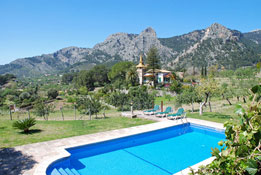 Sóller, also like other towns, has its fair share of history where it comes to the Moors. As with Pollensa, for example, it has a fiesta (in May) to commemorate a battle that took place in Sóller in 1561, though the Moorish invaders were different to those of Pollensa, coming from Algeria. Sóller, in addition to this history, is attractive as a destination in the winter, as it is renowned for being a centre for orange and lemon groves and blossom in January and February. Sóller is also the terminus for the oldest railway on Majorca, that which runs to Palma, and boasts its own tram which connects the town and the port.
Sóller, also like other towns, has its fair share of history where it comes to the Moors. As with Pollensa, for example, it has a fiesta (in May) to commemorate a battle that took place in Sóller in 1561, though the Moorish invaders were different to those of Pollensa, coming from Algeria. Sóller, in addition to this history, is attractive as a destination in the winter, as it is renowned for being a centre for orange and lemon groves and blossom in January and February. Sóller is also the terminus for the oldest railway on Majorca, that which runs to Palma, and boasts its own tram which connects the town and the port.
Find properties for rent in Soller
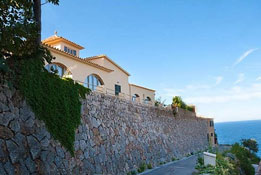 Down the coastline from Puerto Sóller is a small village of only some 500 people, that of Banyalbufar. What is extraordinary about Banyalbufar is its topography. It is a series of terraces set on a slope of the Tramuntana. The terraces come from the time when Bunyalbufar was essentially one enormous vineyard, devoted to a wine grape much prized by the kings of Aragon. The grape has long since ceased to be cultivated, though there are thoughts of reviving it. Banyalbufar is most certainly not a lively place, rather a village of small coves and some pleasant walks, such as that through pine woods to the Port Canonge.
Down the coastline from Puerto Sóller is a small village of only some 500 people, that of Banyalbufar. What is extraordinary about Banyalbufar is its topography. It is a series of terraces set on a slope of the Tramuntana. The terraces come from the time when Bunyalbufar was essentially one enormous vineyard, devoted to a wine grape much prized by the kings of Aragon. The grape has long since ceased to be cultivated, though there are thoughts of reviving it. Banyalbufar is most certainly not a lively place, rather a village of small coves and some pleasant walks, such as that through pine woods to the Port Canonge.
Find properties for rent in Banyalbufar
From Cala D'Or to El Arenal
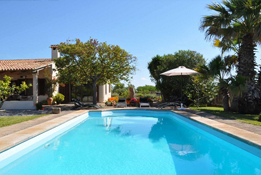 Moving away from the Tramuntana and to the southerly district of Migjorn, two municipalities share arguably the finest beach on the island, that of Es Trenc. The towns are the small Ses Salines and the larger Campos. Ses Salines means the salt lands or marshes. It is the location for the resort of Colonia Sant Jordi, a place that pretty much exists only for the summer, and which is just along the coast from Sa Rapita, Campos's own small resort.
Moving away from the Tramuntana and to the southerly district of Migjorn, two municipalities share arguably the finest beach on the island, that of Es Trenc. The towns are the small Ses Salines and the larger Campos. Ses Salines means the salt lands or marshes. It is the location for the resort of Colonia Sant Jordi, a place that pretty much exists only for the summer, and which is just along the coast from Sa Rapita, Campos's own small resort.
Campos, despite Es Trenc, is a town with comparatively little by way of tourism development. There has been a wish for a golfing and hotel complex to be created in the town, but it has been constantly knocked back by environmental objections and political differences. It is essentially, therefore, an agricultural town, at its centre the gothic-style church of San Julia, built in the middle of the nineteenth century. From both Campos and Ses Salines, if you look out to sea, you can see the island of Sa Cabrera, a national park, to which excursions are available from Colonia San Jordi's marina.
Find properties for rent in Campos
Find properties for rent in Ses Salines
From Son Serra de Marina to Cala Murada
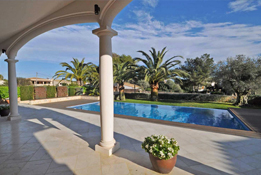 Coming onto the eastern side of Majorca and the Llevant district, this is an area populated with a number of tourist resorts. One of them is Porto Cristo, a town with a strange story to tell in that there has been some dispute as to what its name really is. It took the Balearics Supreme Court to decide some years ago that it was indeed Porto Cristo. One alternative name was Port de Manacor, reflecting the fact that Porto Cristo is part of the capital city of the Llevant district; Manacor is also the home town of tennis star Rafael Nadal.
Coming onto the eastern side of Majorca and the Llevant district, this is an area populated with a number of tourist resorts. One of them is Porto Cristo, a town with a strange story to tell in that there has been some dispute as to what its name really is. It took the Balearics Supreme Court to decide some years ago that it was indeed Porto Cristo. One alternative name was Port de Manacor, reflecting the fact that Porto Cristo is part of the capital city of the Llevant district; Manacor is also the home town of tennis star Rafael Nadal.
Porto Cristo is perhaps best known for its caves, those of Drach and Hams, between which there is some not inconsiderable rivalry. Both though are quite remarkable.
Find properties for rent in Porto Cristo
Find properties for rent in Manacor
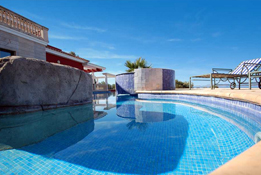 At the northerly end of the Llevant district is the town of Artà, a relatively small place but one that is bursting with history, much of it dating from Talayotic Bronze Age times, and evidenced by the settlement of Ses Païsses that dates from roughly 900BC. The town also has an impressive church and castle which was built in the time of the Muslim occupation of Majorca. Under Muslim rule, Artà became one of the more important towns in Majorca. It used to in fact be much larger, as, until the nineteenth century, it combined the neighbouring towns of Son Servera and Capdepera, the Muslims having made Artà a main administrative town which included the other two.
At the northerly end of the Llevant district is the town of Artà, a relatively small place but one that is bursting with history, much of it dating from Talayotic Bronze Age times, and evidenced by the settlement of Ses Païsses that dates from roughly 900BC. The town also has an impressive church and castle which was built in the time of the Muslim occupation of Majorca. Under Muslim rule, Artà became one of the more important towns in Majorca. It used to in fact be much larger, as, until the nineteenth century, it combined the neighbouring towns of Son Servera and Capdepera, the Muslims having made Artà a main administrative town which included the other two.
Part of the Llevant nature park lies inside Artà and, a bit like Campos to the south, Artà is not a town overrun by tourism. Its main coastal resort is a sleepy one - that of Colonia San Pedro - and the main beach at Son Serra de Marina, another very quiet place, is in Artà and not in neighbouring Santa Margalida, even though Son Serra is actually administered by Santa Margalida.
Find properties for rent in Arta
Find properties for rent in Son Serra de Marina
Can Picafort and the central areas of Majorca
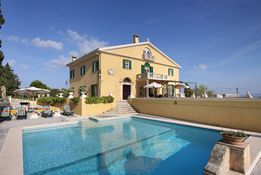 And Santa Margalida, in the Pla of Majorca, is the next port of call. This town is perhaps best known for its September fiesta of La Beata, recognised as the most typical of Majorca's fiestas. In the town there is a garden devoted to Santa Catalina Thomás, who was La Beata, the story of whom relates to her temptation by the devil which she rebuffed. The fiesta features a parade in which a girl of the town acts out the role of La Beata as demons try to tempt her with fire.
And Santa Margalida, in the Pla of Majorca, is the next port of call. This town is perhaps best known for its September fiesta of La Beata, recognised as the most typical of Majorca's fiestas. In the town there is a garden devoted to Santa Catalina Thomás, who was La Beata, the story of whom relates to her temptation by the devil which she rebuffed. The fiesta features a parade in which a girl of the town acts out the role of La Beata as demons try to tempt her with fire.
Santa Margalida is also known as being the home town of Joan March, the founder of one of Majorca and Spain's leading banks, Banca March. The townspeople are, however, somewhat ambivalent towards the memory of March, who was known as Franco's banker.
Find properties for rent in Santa Margalida
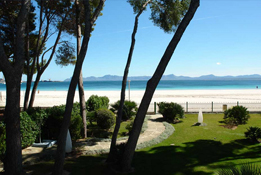 More popular than Son Serra is the resort of Can Picafort, which is part of Santa Margalida, a modern resort that benefits, as does its neighbours Playa de Muro and Alcúdia, from one of Majorca's outstanding beaches that stretches for many kilometres along the bay of Alcúdia. Near to Can Picafort is the finca of Son Real, a protected nature area, like the Albufera nature park, which lies to the other side of Can Picafort. Son Real, in addition to its wildlife and flora, is noted for its prehistoric necropolis burial grounds.
More popular than Son Serra is the resort of Can Picafort, which is part of Santa Margalida, a modern resort that benefits, as does its neighbours Playa de Muro and Alcúdia, from one of Majorca's outstanding beaches that stretches for many kilometres along the bay of Alcúdia. Near to Can Picafort is the finca of Son Real, a protected nature area, like the Albufera nature park, which lies to the other side of Can Picafort. Son Real, in addition to its wildlife and flora, is noted for its prehistoric necropolis burial grounds.
Find properties for rent in Can Picafort
Find properties for rent in Playa de Muro
Find properties for rent in Alcudia
The stretch from Alcúdia to almost Palma
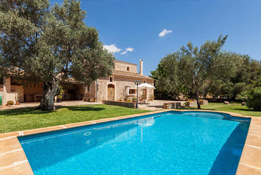 Near to Santa Margalida, as one ventures inland into the district of Es Raiguer, are the small villages of Búger and Campanet, which lie to either side of the motorway from Inca going northward to Alcúdia. Both villages are built on low hill land and both are representative of quiet, rural Majorca. Búger is known more for its pig and cattle farming as opposed to crop agriculture, and the two villages have between them one of Majorca's finest glass factories, Menestralia. Campanet is also the location for more famous caves, those, naturally enough, of Campanet and the "fonts Ufanes", a peculiar phenomenon of water welling up from an aquifer on the finca of Gabellí which occurs especially after rainfall.
Near to Santa Margalida, as one ventures inland into the district of Es Raiguer, are the small villages of Búger and Campanet, which lie to either side of the motorway from Inca going northward to Alcúdia. Both villages are built on low hill land and both are representative of quiet, rural Majorca. Búger is known more for its pig and cattle farming as opposed to crop agriculture, and the two villages have between them one of Majorca's finest glass factories, Menestralia. Campanet is also the location for more famous caves, those, naturally enough, of Campanet and the "fonts Ufanes", a peculiar phenomenon of water welling up from an aquifer on the finca of Gabellí which occurs especially after rainfall.
Find properties for rent in Buger
Find properties for rent in Campanet
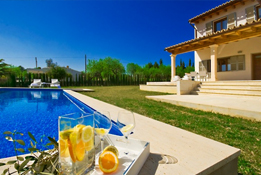 Next to Campanet is the village of Selva, which is really a combination of five smaller villages, such as Caimari and Moscari. Nestling under the Tramuntana mountains, Selva was declared a "town" in the year 1300 by King James II of Majorca. Along with its neighbour, Inca, Selva is known, in religious terms, for its devotion to Christ the King. The hermitage of Crist Rei is an important centre for pilgrims at Easter. Caimari, with only 700 residents, has a reputation for its olives, and indeed it holds, in November each year, its olive fair.
Next to Campanet is the village of Selva, which is really a combination of five smaller villages, such as Caimari and Moscari. Nestling under the Tramuntana mountains, Selva was declared a "town" in the year 1300 by King James II of Majorca. Along with its neighbour, Inca, Selva is known, in religious terms, for its devotion to Christ the King. The hermitage of Crist Rei is an important centre for pilgrims at Easter. Caimari, with only 700 residents, has a reputation for its olives, and indeed it holds, in November each year, its olive fair.
Find properties for rent in Selva
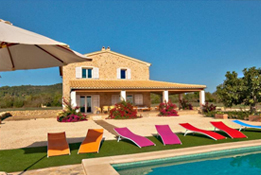 Inca is one of Majorca's larger towns. The capital of the Es Raiguer district, it is the centre of the island's leather industry, there being several leather factory shops as well as a shop for Camper, the international shoe company which is based in Inca. The centre of the town is good for shopping and, in addition to many restaurants, boasts some classy clubs and pubs of a more modern style. Inca's market, held each Thursday, is the largest of Majorca's markets and a major attraction for excursions. The Thursday market is that special that in November there is the most famous of Majorca's fairs, the Dijous Bo (good Thursday), originally a market for harvested produce and local craft (which it still is), but now a huge occasion to which people from all over Majorca come every year.
Inca is one of Majorca's larger towns. The capital of the Es Raiguer district, it is the centre of the island's leather industry, there being several leather factory shops as well as a shop for Camper, the international shoe company which is based in Inca. The centre of the town is good for shopping and, in addition to many restaurants, boasts some classy clubs and pubs of a more modern style. Inca's market, held each Thursday, is the largest of Majorca's markets and a major attraction for excursions. The Thursday market is that special that in November there is the most famous of Majorca's fairs, the Dijous Bo (good Thursday), originally a market for harvested produce and local craft (which it still is), but now a huge occasion to which people from all over Majorca come every year.
Find properties for rent in Inca
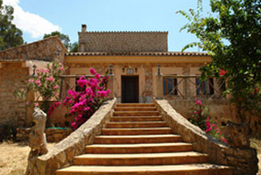 Also in the Es Raiguer area is the town of Santa María del Camí. The word "camí" in Catalan means "way" or "road", and Santa María, dating back to Arabic times, became a place of a "stop on the way" for those heading to Palma. The town is celebrated for its spirits and especially its liqueurs. Santa María's town centre features a seventeenth-century town hall building and a baroque parish (and the baroque style is less common than Gothic in Majorca) with a blue bell.
Also in the Es Raiguer area is the town of Santa María del Camí. The word "camí" in Catalan means "way" or "road", and Santa María, dating back to Arabic times, became a place of a "stop on the way" for those heading to Palma. The town is celebrated for its spirits and especially its liqueurs. Santa María's town centre features a seventeenth-century town hall building and a baroque parish (and the baroque style is less common than Gothic in Majorca) with a blue bell.
Find properties for rent in Santa Maria del Cami
Back to the central areas...
 Moving away from Es Raiguer and back into the Pla district, the village of Lloret de Vista Alegre lays claim to being at the centre of Majorca. Lloret, with its substantial parish church of the virgin of Lloret, is remarkable for its pine forest in which there is a chapel to Saint Francis. And the village makes much of its culture of the land, marking it out as one of the most traditional of Majorca's villages. The fiesta of Es Sequer in autumn is a celebration of, for example, fig-growing, and is one designed to capture the rural culture of the village.
Moving away from Es Raiguer and back into the Pla district, the village of Lloret de Vista Alegre lays claim to being at the centre of Majorca. Lloret, with its substantial parish church of the virgin of Lloret, is remarkable for its pine forest in which there is a chapel to Saint Francis. And the village makes much of its culture of the land, marking it out as one of the most traditional of Majorca's villages. The fiesta of Es Sequer in autumn is a celebration of, for example, fig-growing, and is one designed to capture the rural culture of the village.
Find properties for rent in Lloret de Vista Alegre
The main route to and from Lloret is the old main road to Sineu, a town of nearly 4,000 people and known for its Wednesday market. The town has an ancient history with its own links to the Talayotic era and an imposing parish church, Santa Maria, which was burnt down in the early sixteenth century and then rebuilt and ultimately renovated in the late nineteenth century and more recently in this century. There is also the palace of the kings of Majorca, which dates back to the days of James II of Majorca. While Inca has the most-famous autumn fair in Majorca, Sineu has the most-famous spring fair - Sa Fira, considered to be second in importance only to Inca's Dijous Bo.
And it is here, in Sineu, that our journey around the districts of Majorca and a few of its villages and towns comes to an end.